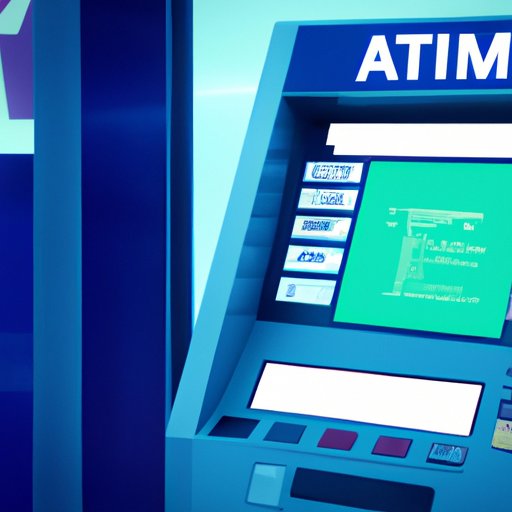
Introduction
ATMs (automated teller machines) are a necessary part of modern banking, used by millions of customers every day to withdraw cash, check account balances, and make deposits. Most people don’t realize just how much cash an ATM can hold, how it’s refilled and maintained, or the security measures that are put in place to protect the cash. Understanding how much money an ATM can hold, how it’s refilled and maintained, and the security measures put in place is crucial in order to keep your accounts and identity safe. This article will explore these three aspects of ATM cash management in greater detail, as well as touch on current statistics and the future of ATMs.
The Hidden Fortune: Uncovering the Amount of Money an ATM can Hold
The amount of cash an ATM can hold varies depending on the type of machine. Indoor ATMs can hold up to a maximum of $250,000, while outdoor ATMs can hold anywhere from $20,000 to $100,000 depending on the location and level of security. Standalone ATMs (those not attached to a bank or other location) can hold up to $500,000. Although these numbers might seem surprising, keep in mind that large cities with a high volume of foot traffic require more cash in order to meet the demands of customers.
How ATMs are Refilled and Maintained
When it comes to refilling an ATM, bank employees will load cash into a secure container that is then transported to the ATM site. Once at the site, the container is unlocked using a key, and the cash is loaded into the machine using a special cassette. Technicians also perform regular maintenance on ATMs, ensuring that they are functioning properly and that there are no potential security breaches. The amount of money an employee will carry on hand varies depending on the size and location of the ATM, but a typical refill will be about $20,000 to $50,000.
Managing Risks: Securing ATM Cash
Banks have implemented security measures to prevent robberies and ensure the safety of the cash inside ATMs. These measures can include physical security features, like reinforced steel walls and doors, as well as surveillance cameras and alarms that are triggered if the ATM is tampered with. Customers can also take steps to protect themselves, such as using an ATM located inside a bank or building, avoiding machines located in remote or poorly lit areas, and always covering the keypad while entering their PIN number.
There are also several types of ATM scams to watch out for. Skimming, for example, involves placing a device over the card reader to record personal information. Card trapping involves a device that traps your card inside the machine, and then collecting it later. Stay alert and report any suspicious activity to the authorities.
Statistics on ATM Transactions
On average, ATM customers withdraw around $60 for each transaction, with nearly 500,000 transactions taking place daily in the United States alone. The countries with the highest amount of cash withdrawals per day are China, Japan, and the United States. Interestingly, recent data shows that younger generations are using cash less frequently and opting for digital payments instead.
The Future of Cash and ATMs
The Coronavirus Pandemic has expedited the shift towards a cashless society, with people wary of handling physical currency. However, ATM usage increased by 12% in the UK alone in 2020. As the world changes to meet the needs of contactless banking, so do ATMs, with banks implementing contactless machines and transitioning to touch-less payment options to meet the needs of their customers. Future advancements in technology could lead to a cashless world, however, cash is still considered an important form of payment for many individuals and situations.
Conclusion
ATMs play a significant role in our daily lives, providing us with access to our bank accounts and finances. It’s important that we understand the amount of money held inside ATMs, how they’re refilled and maintained, and the security measures in place to protect the cash. By doing so, we can make better choices as a consumer and protect ourselves from potential security risks. The future of ATMs is changing, and knowing what to look out for can put us in a better position to adapt as things continue to evolve. Stay informed and stay ahead of the game.




